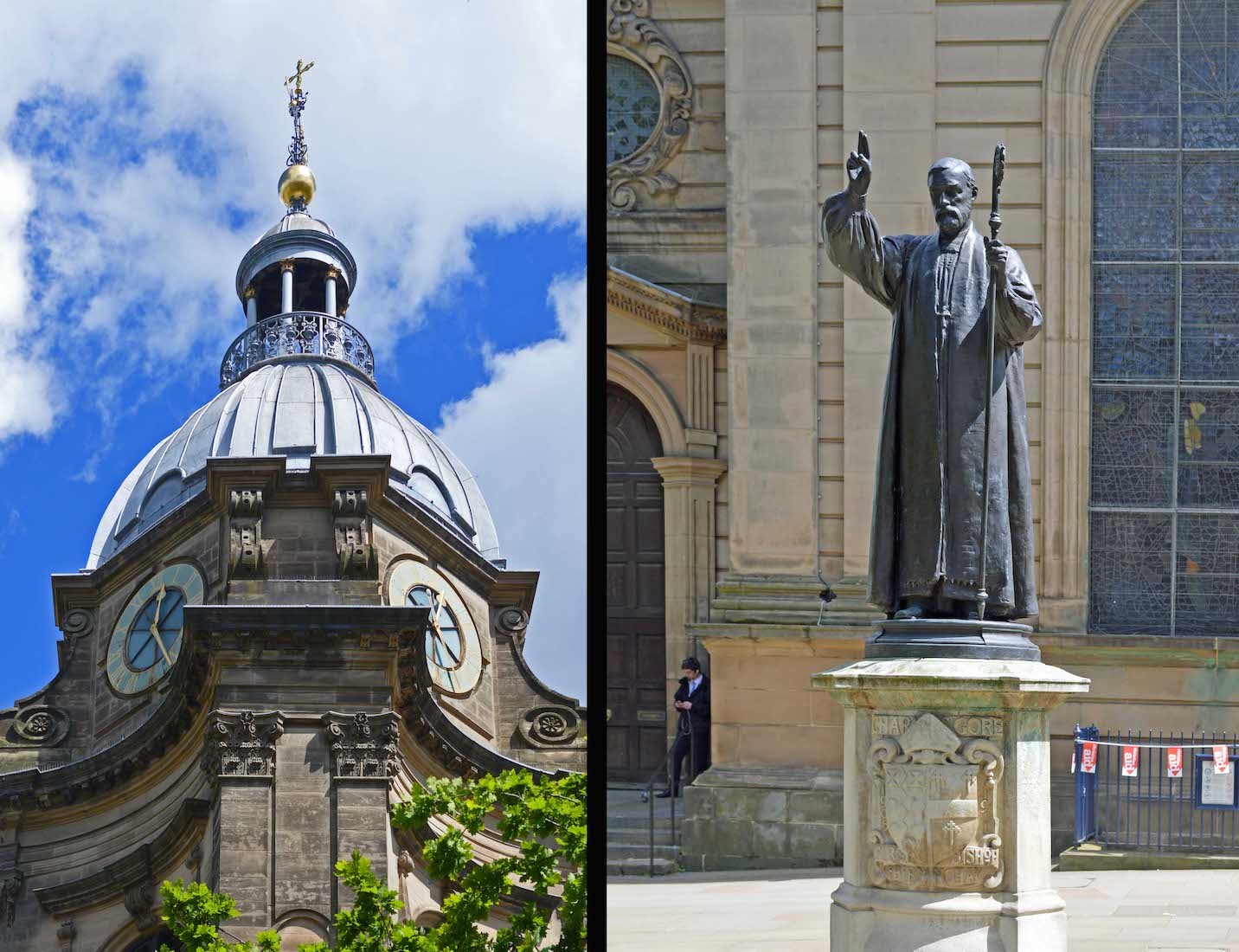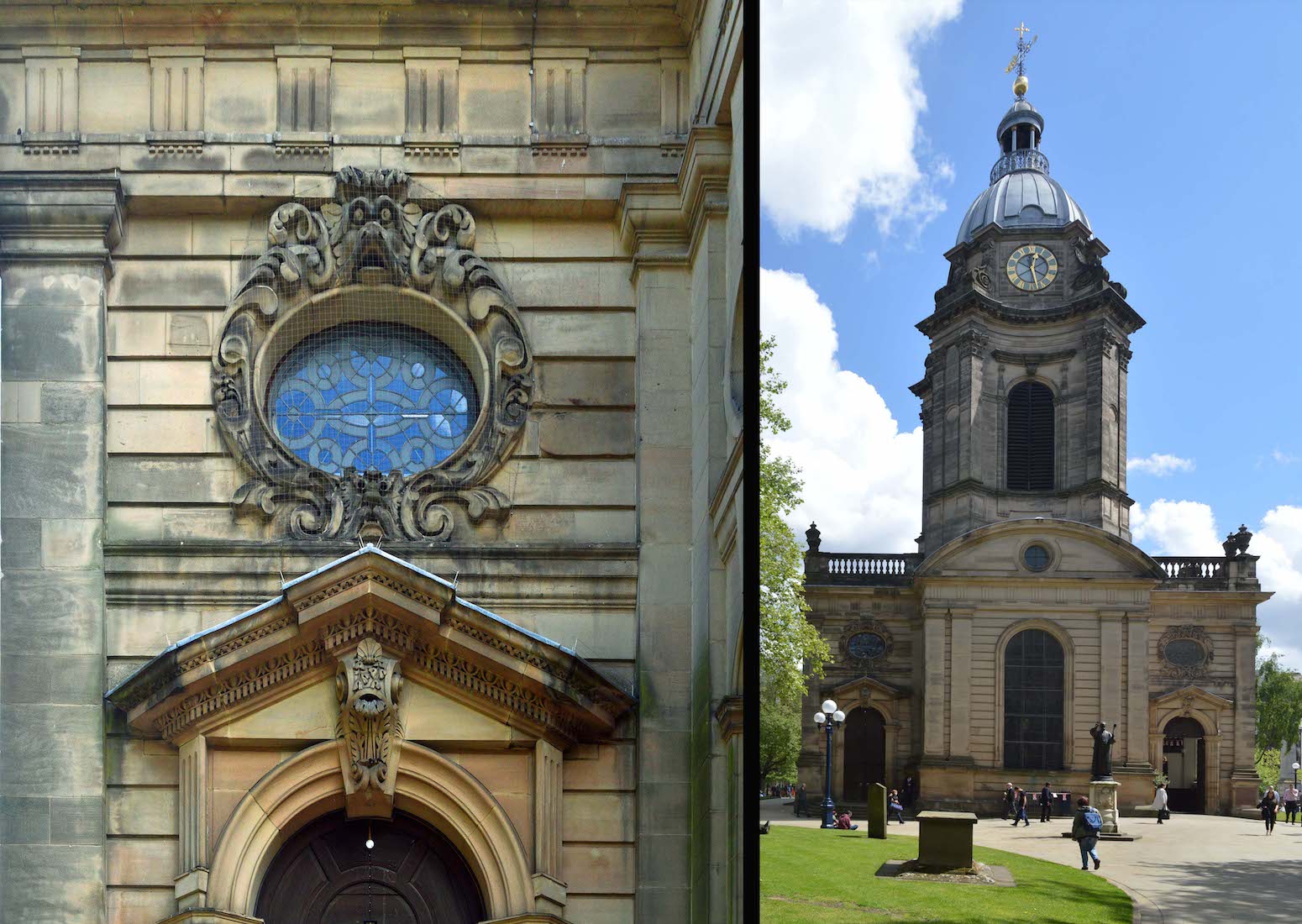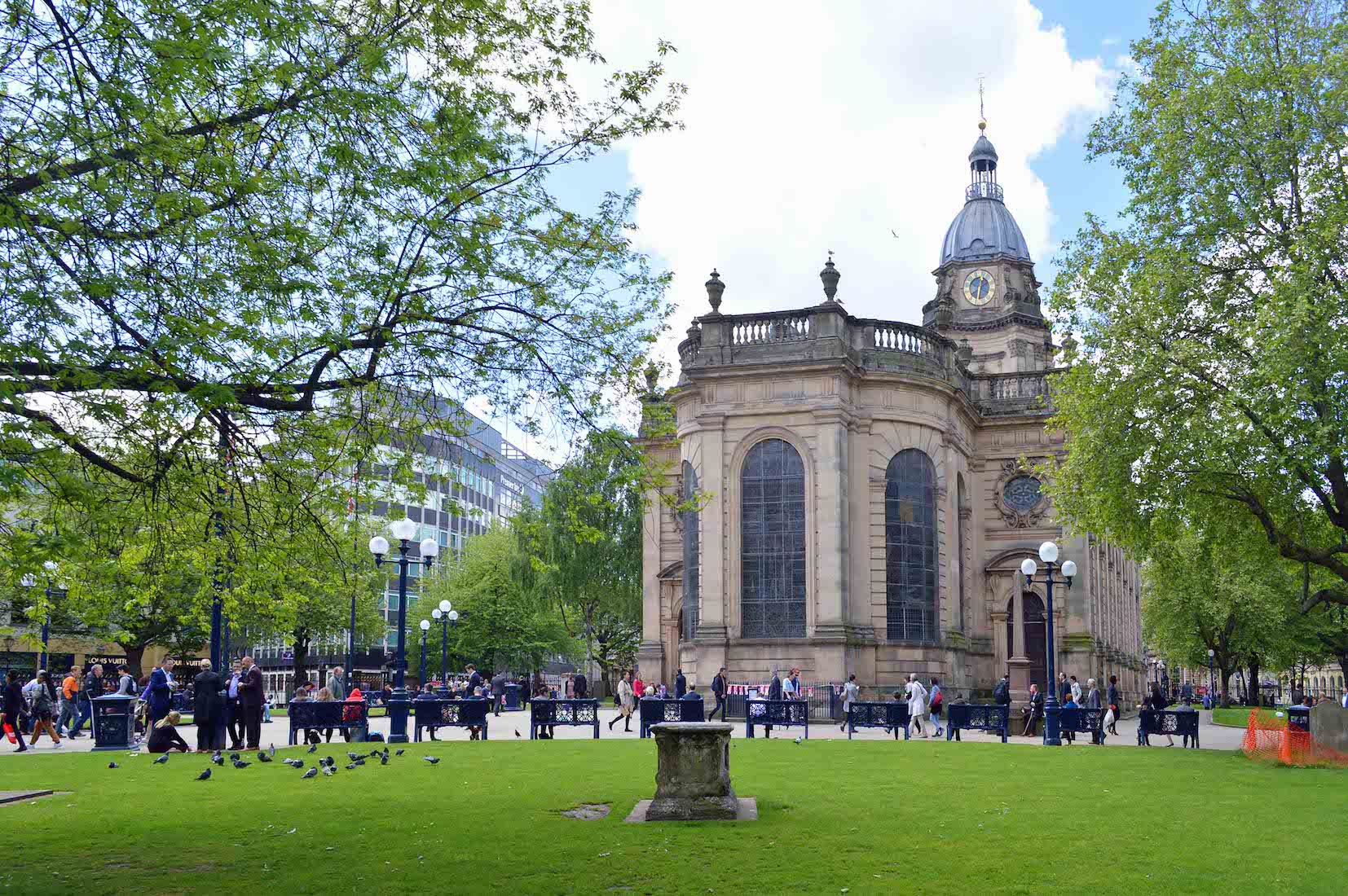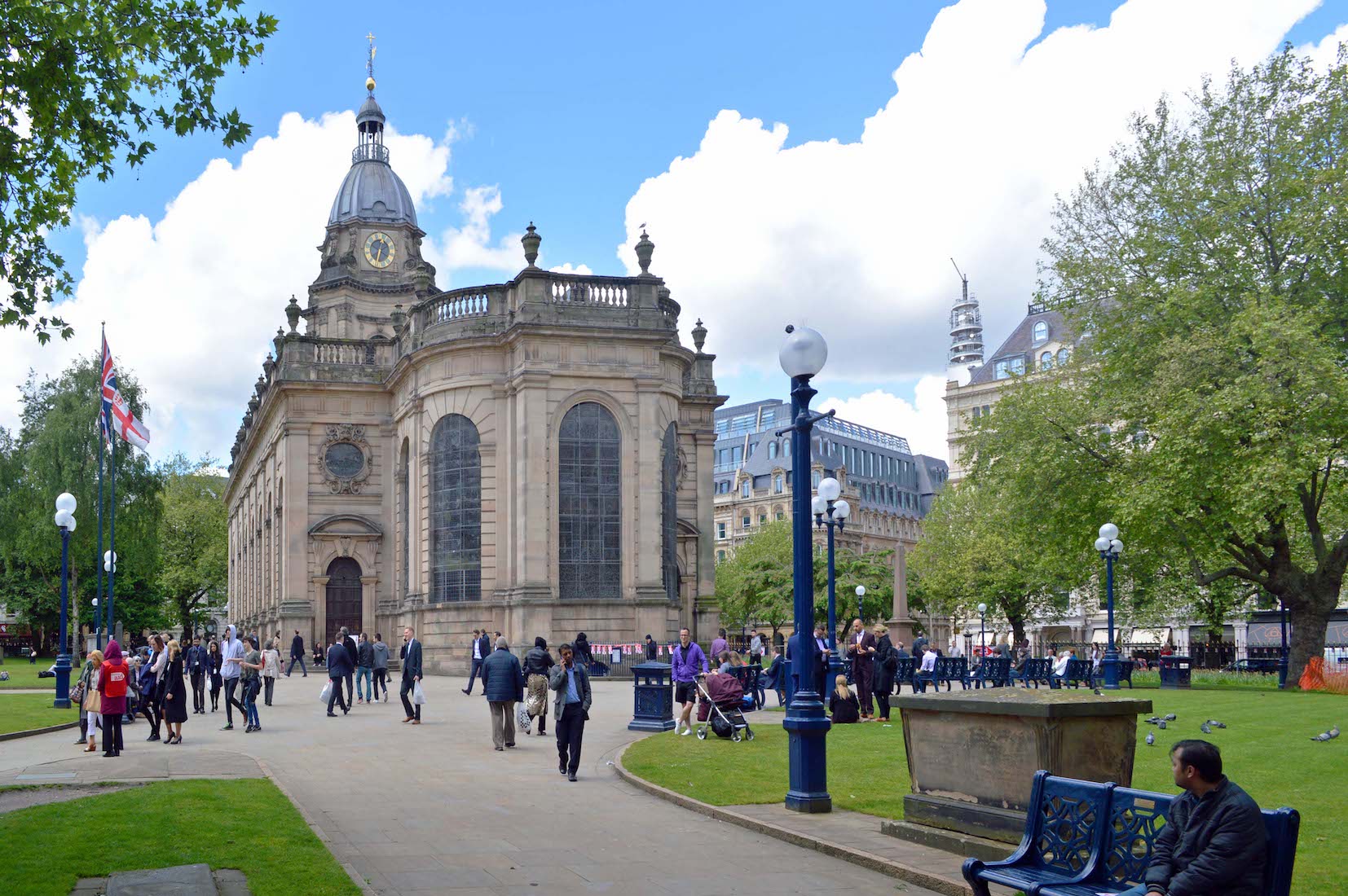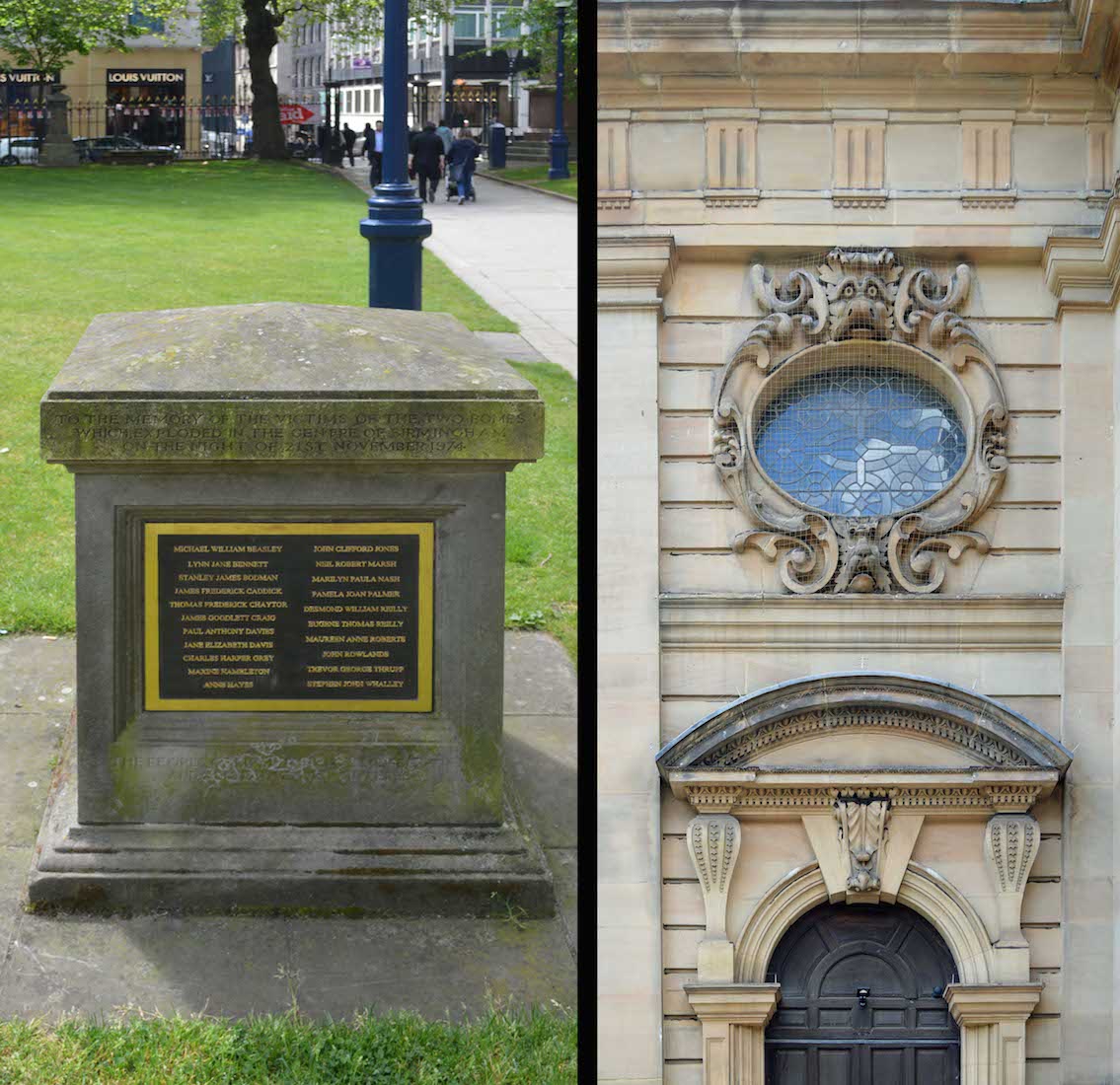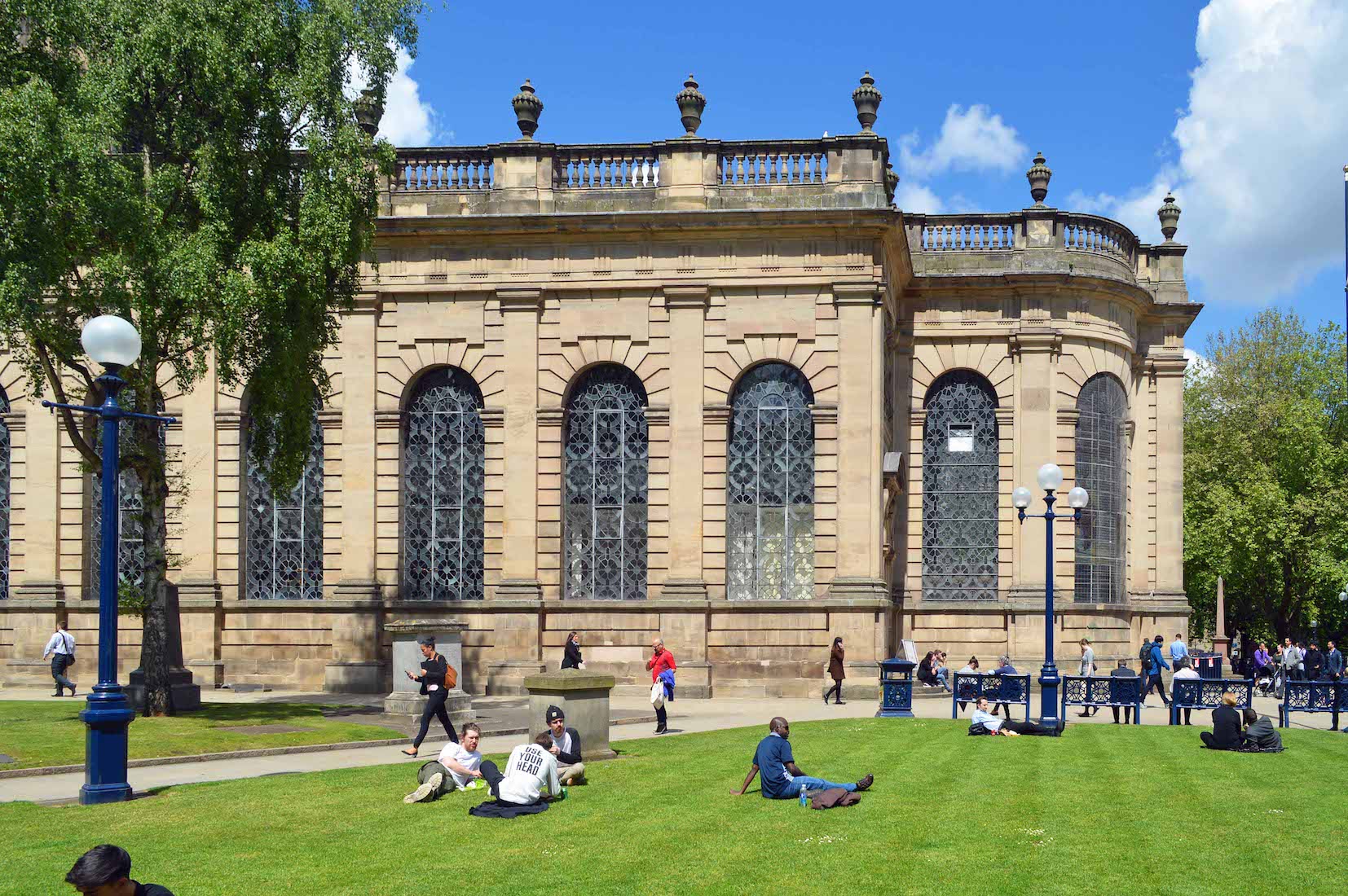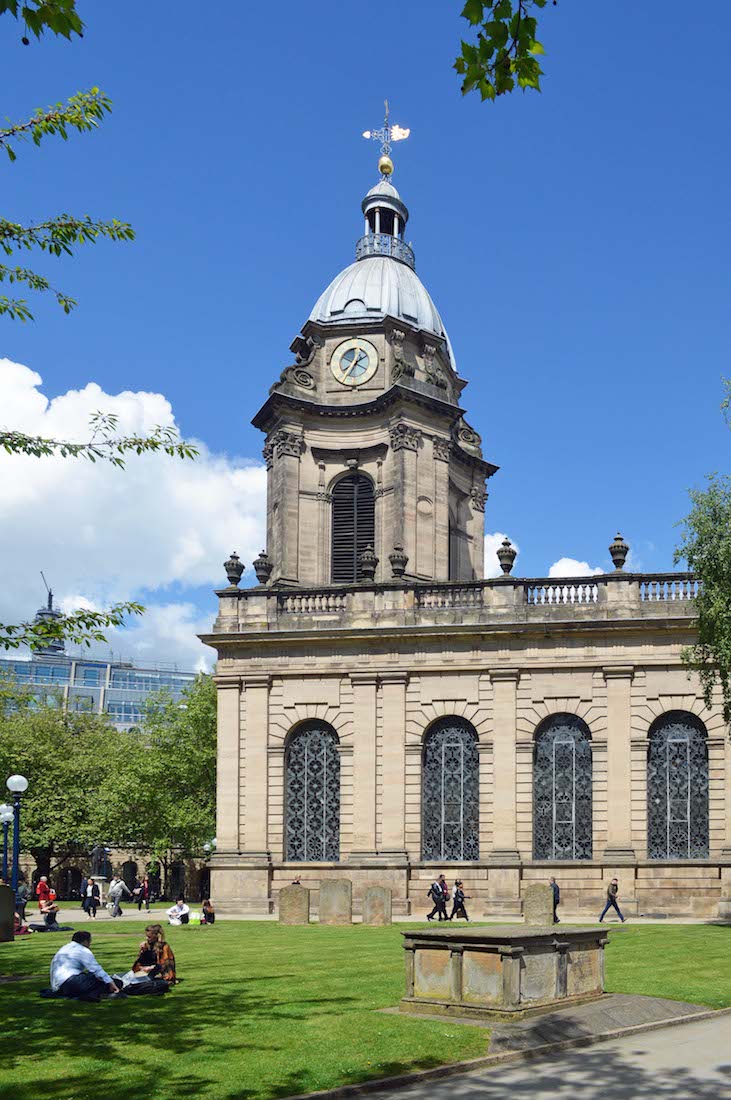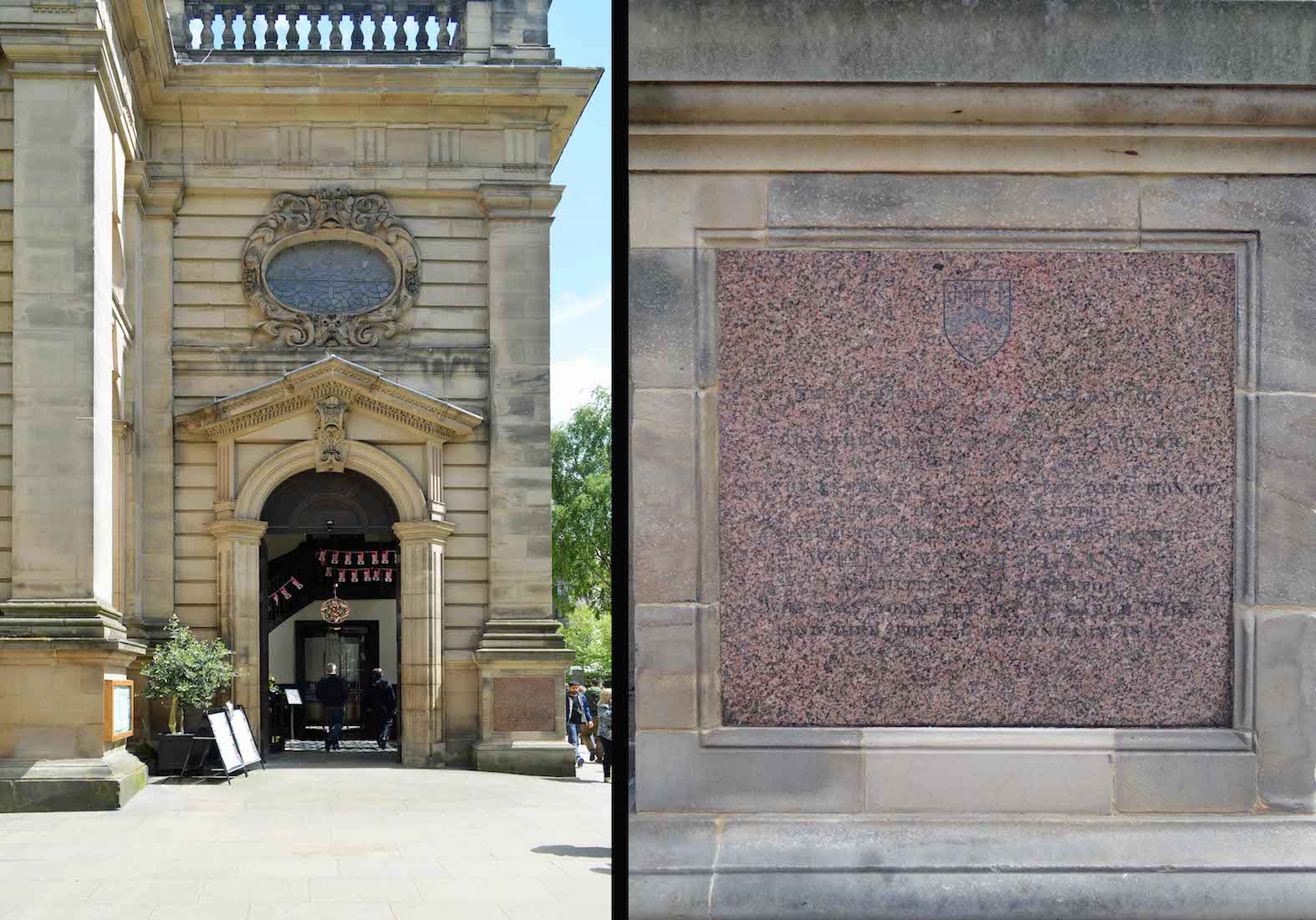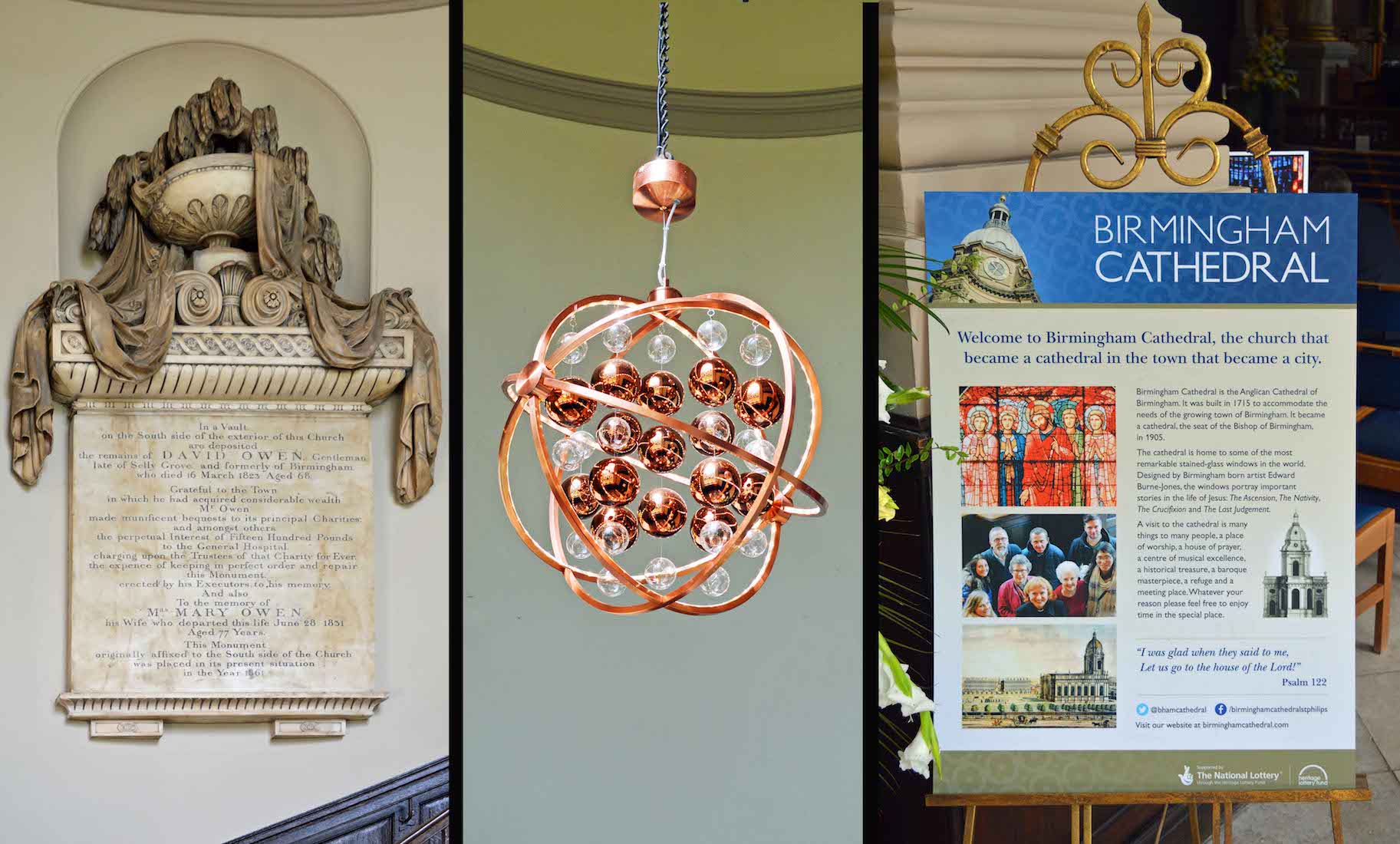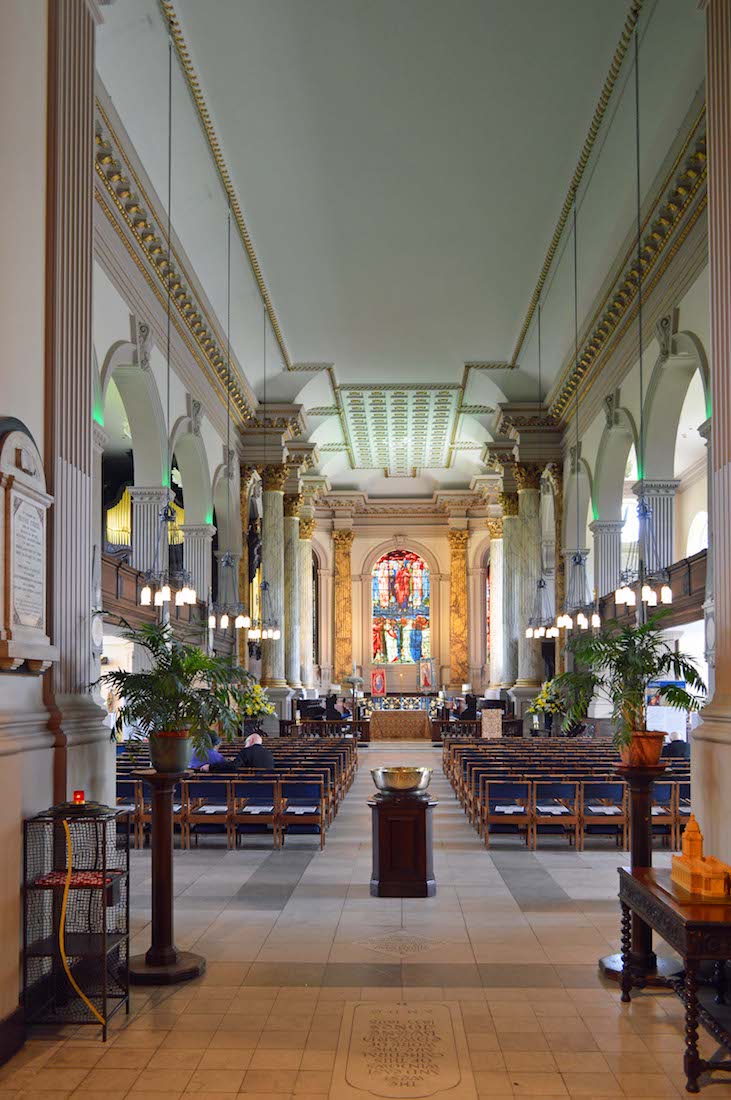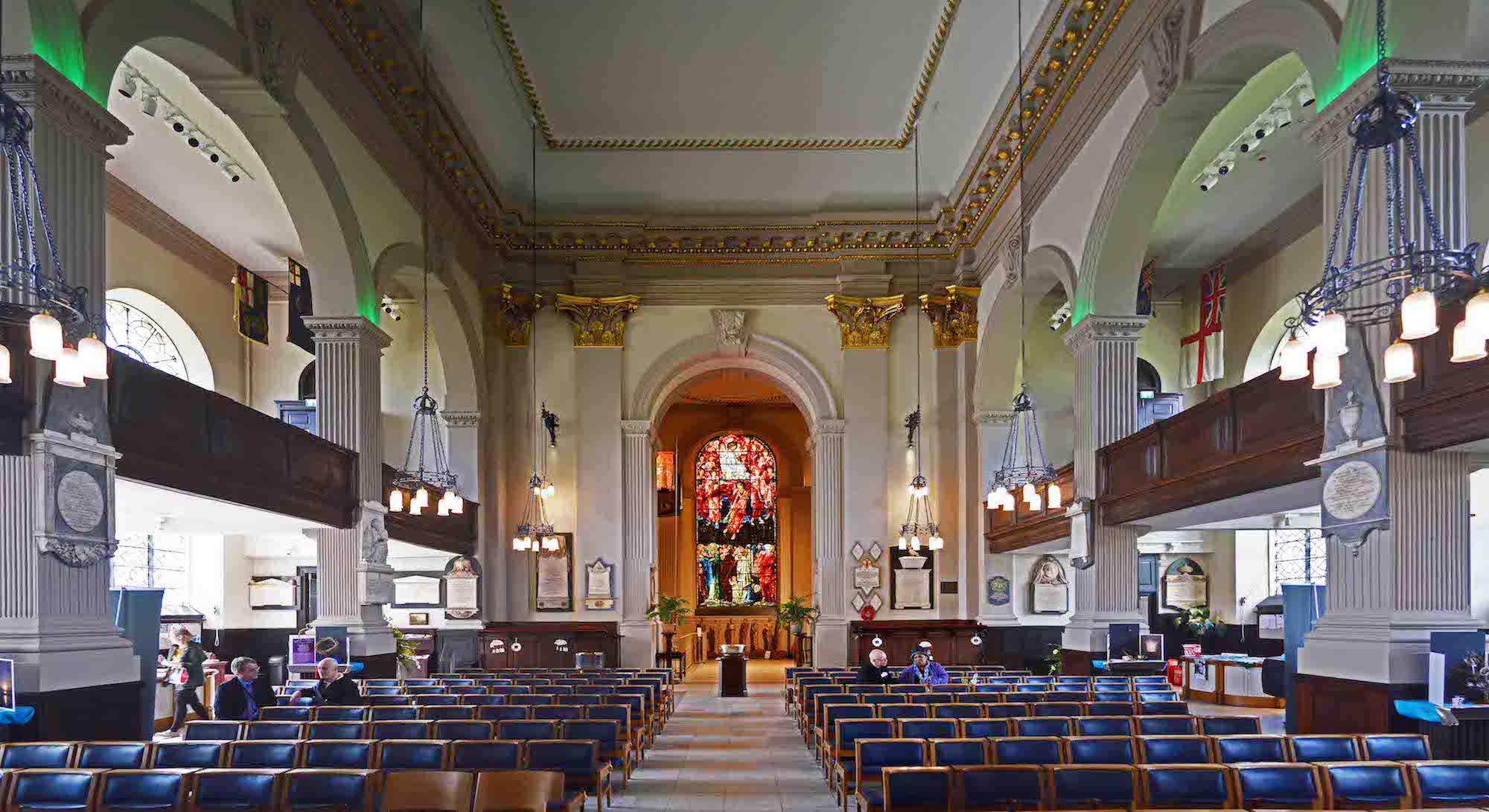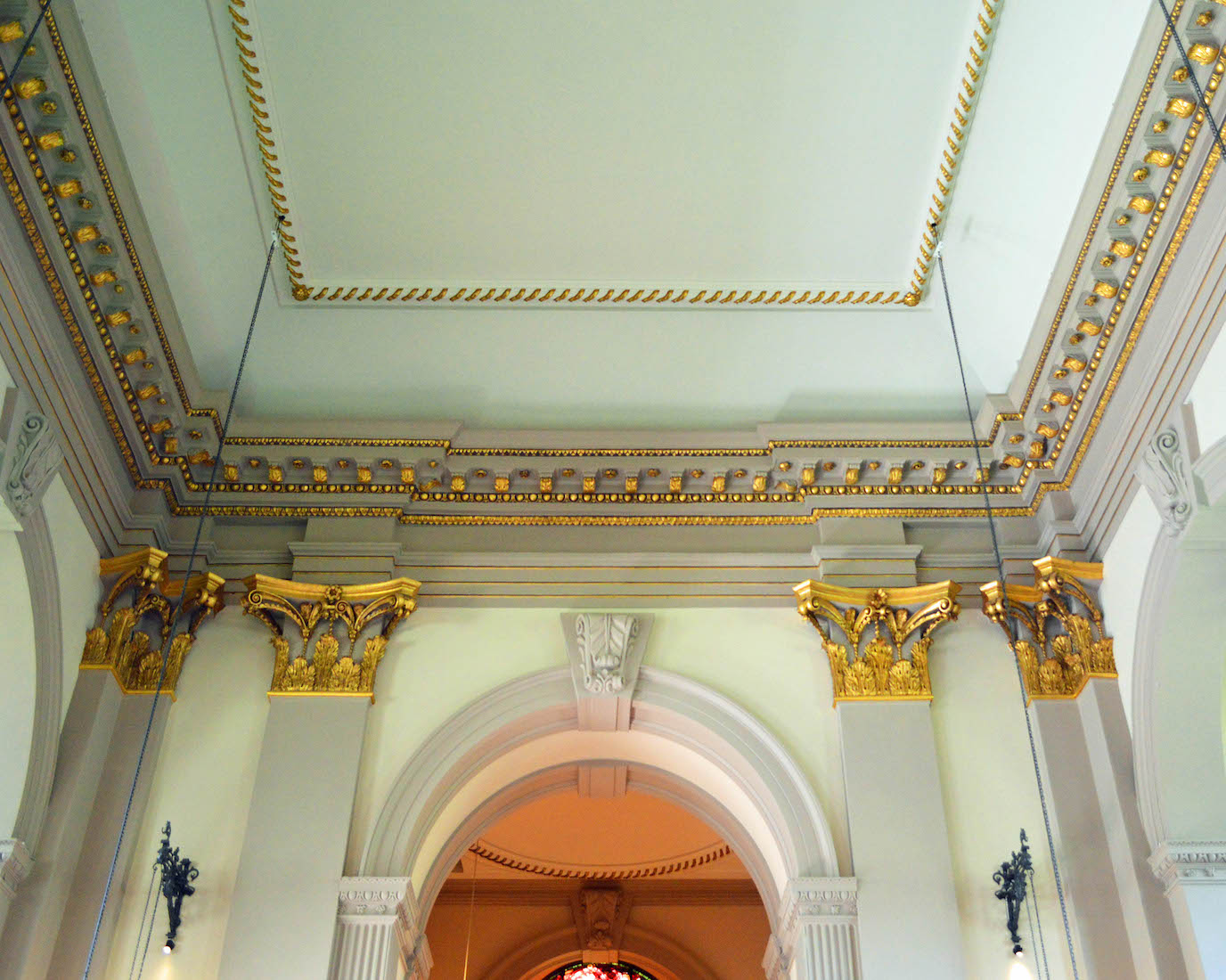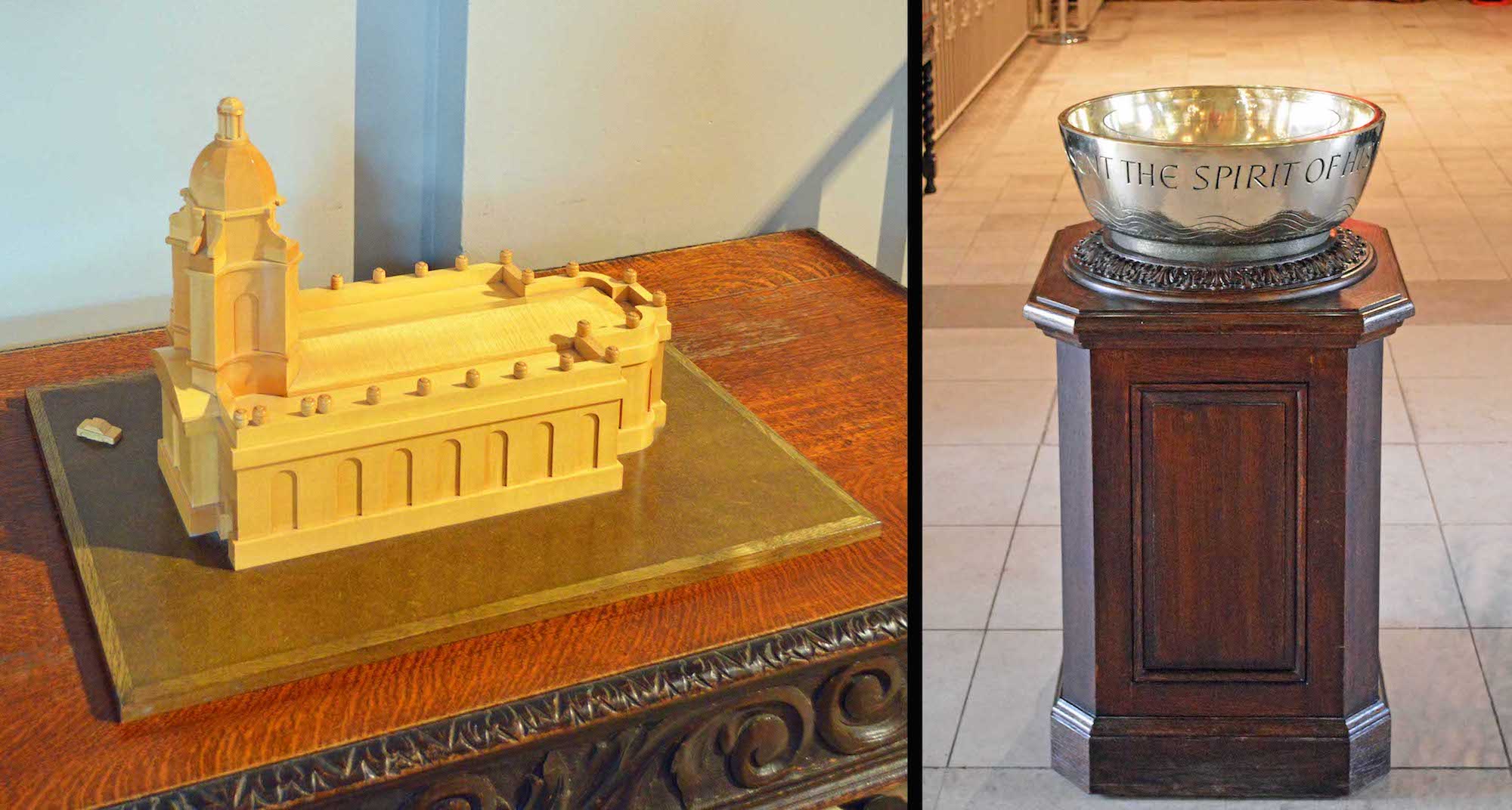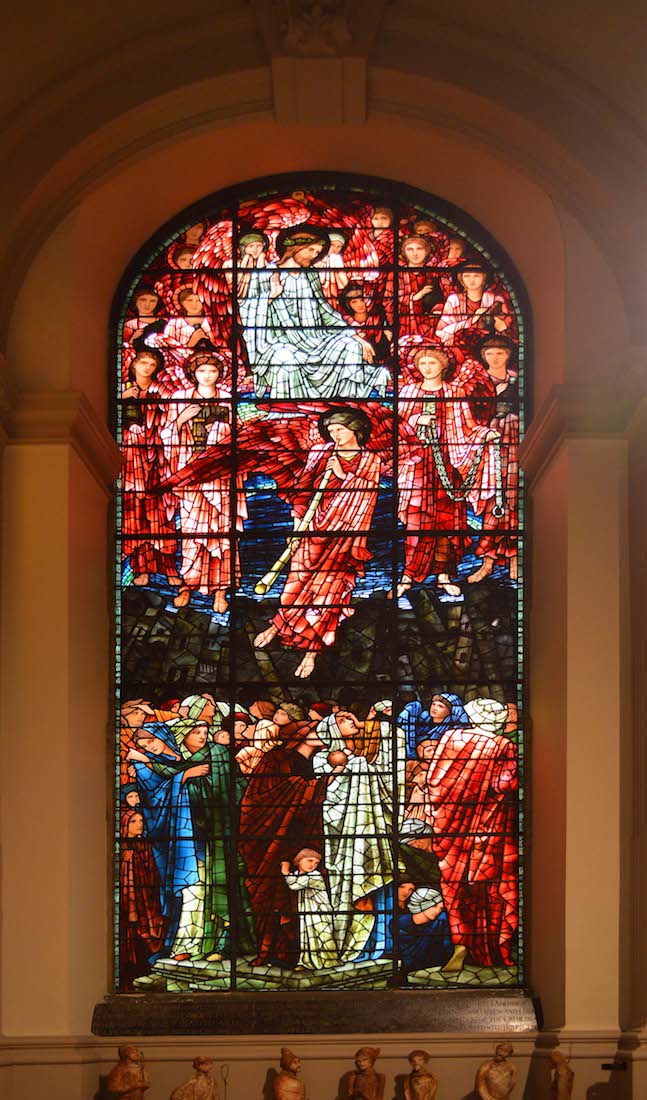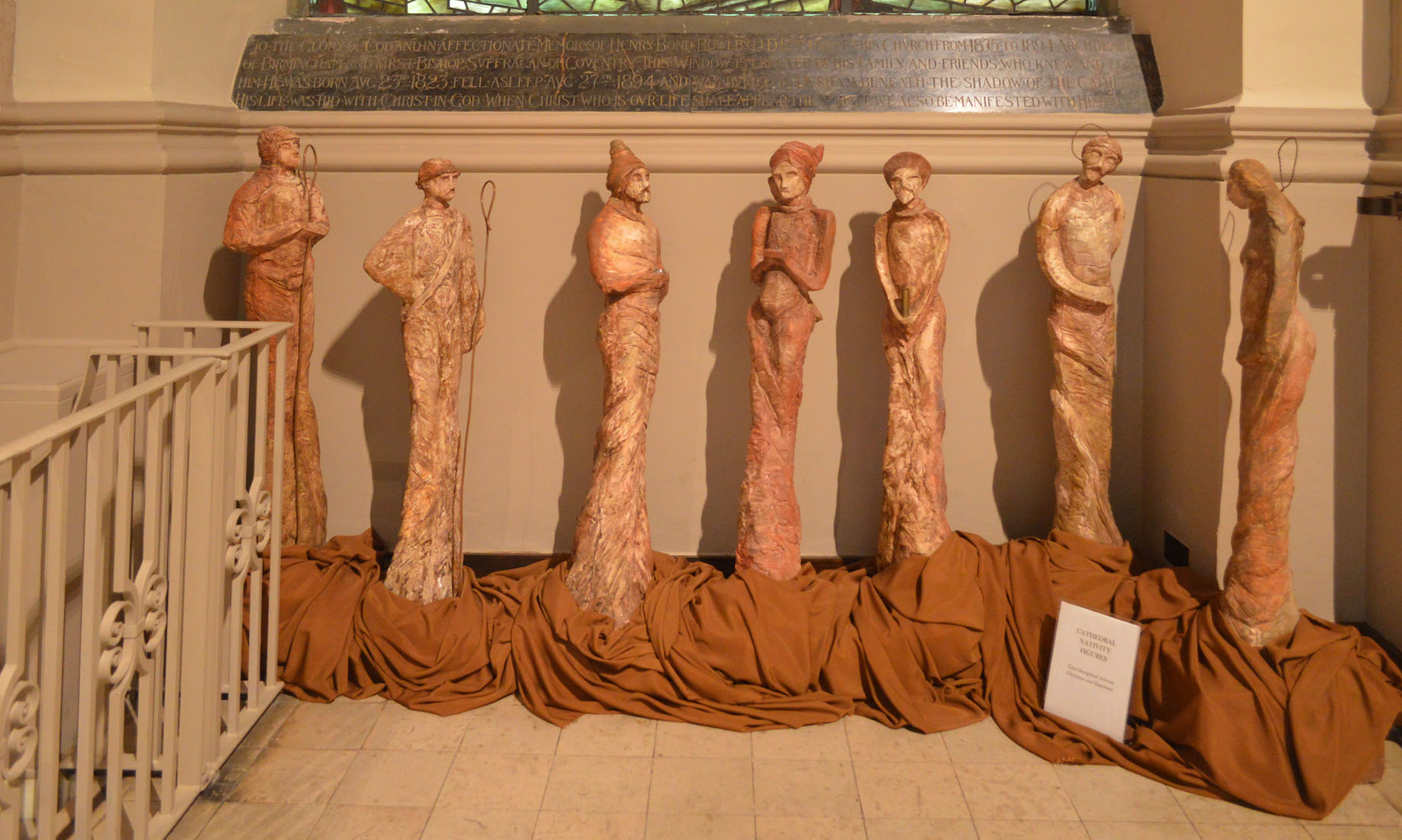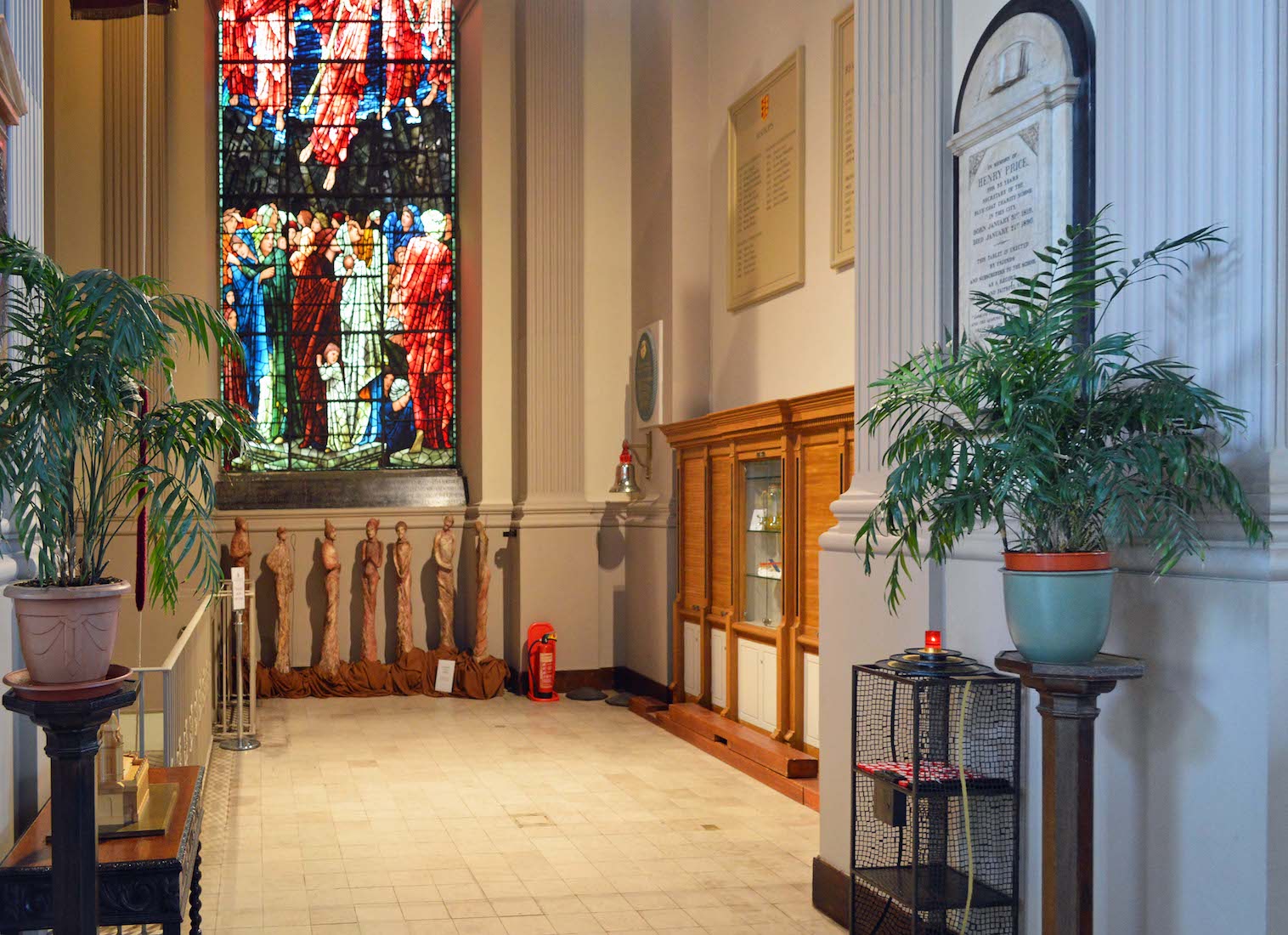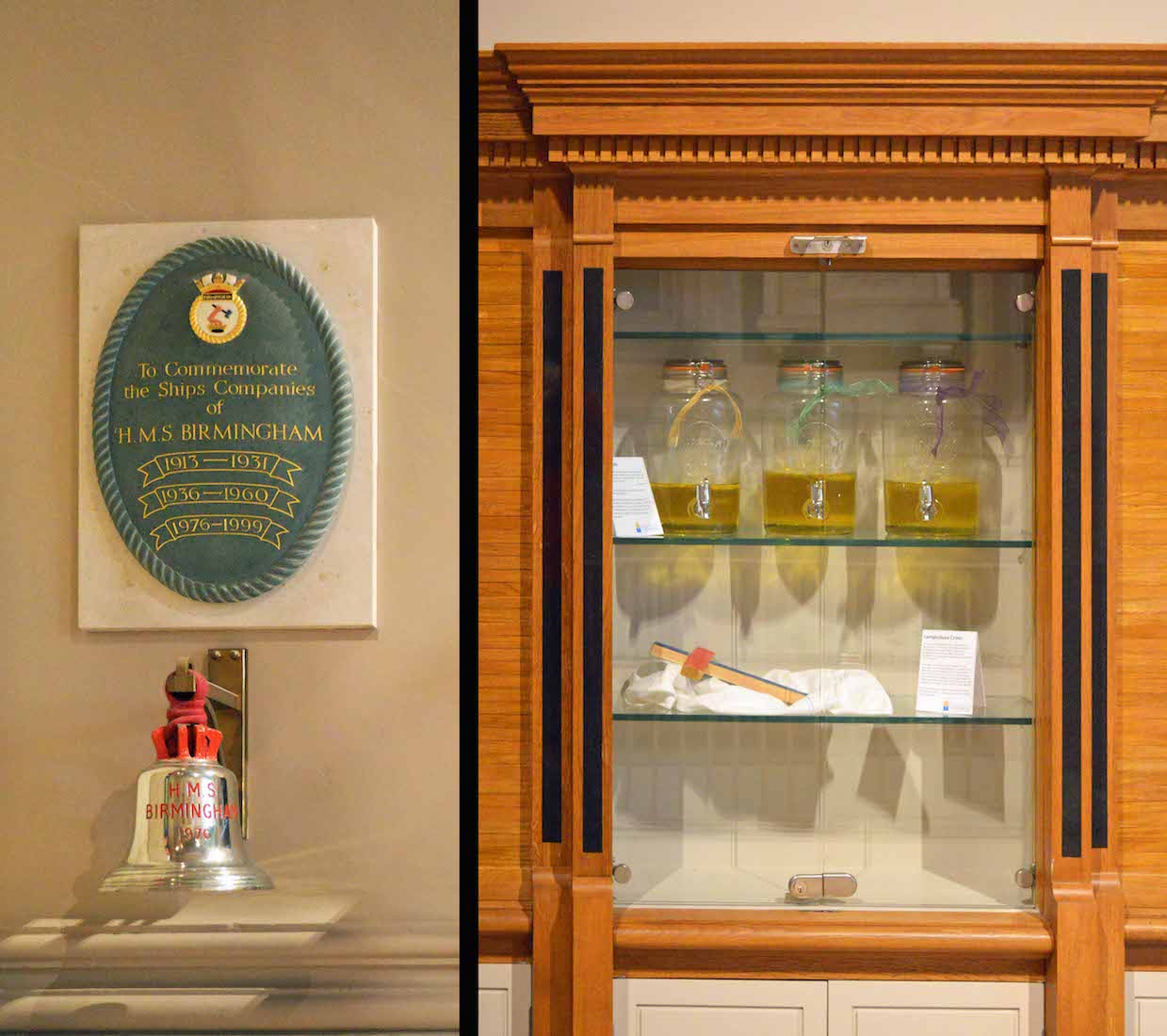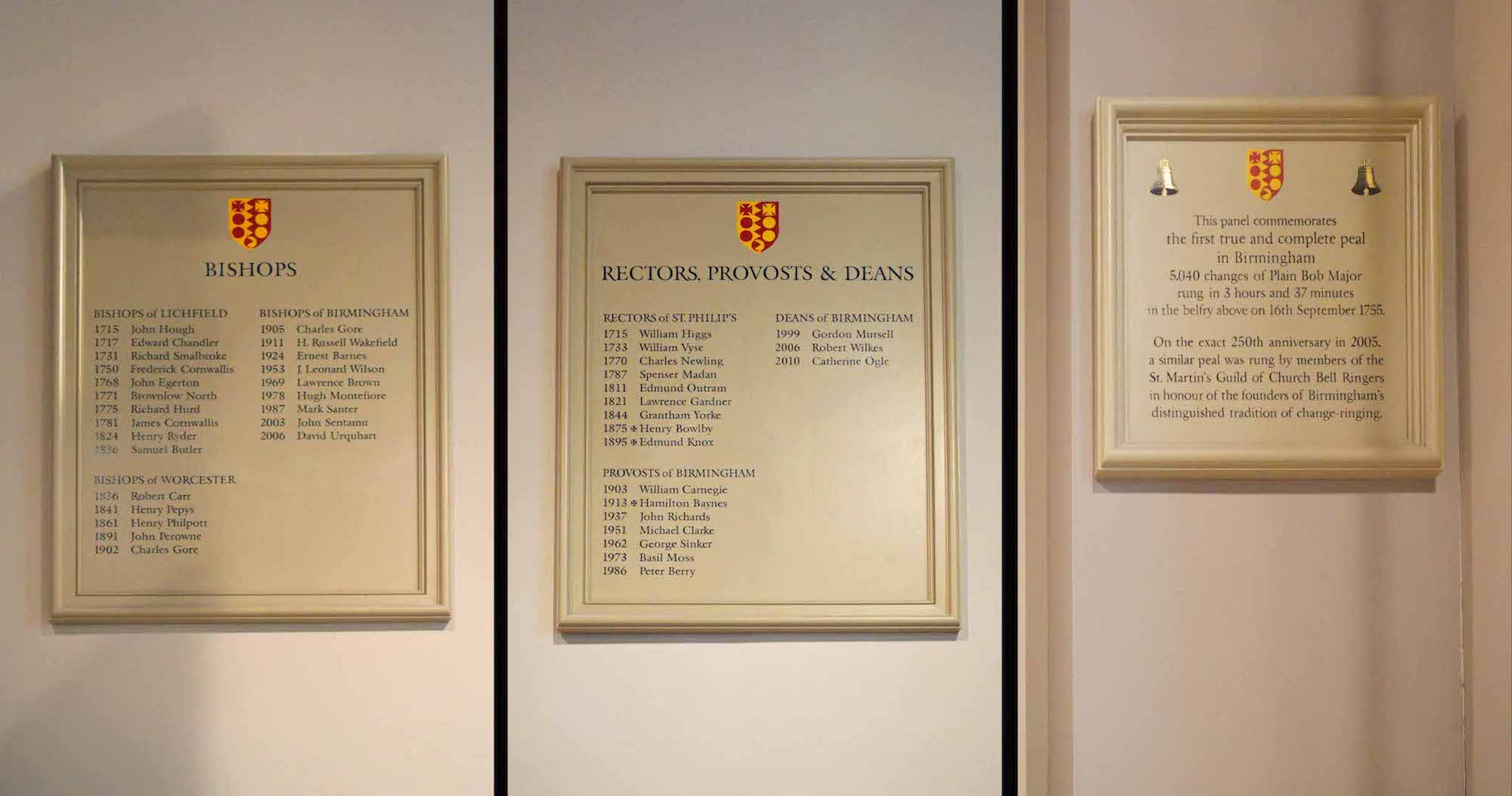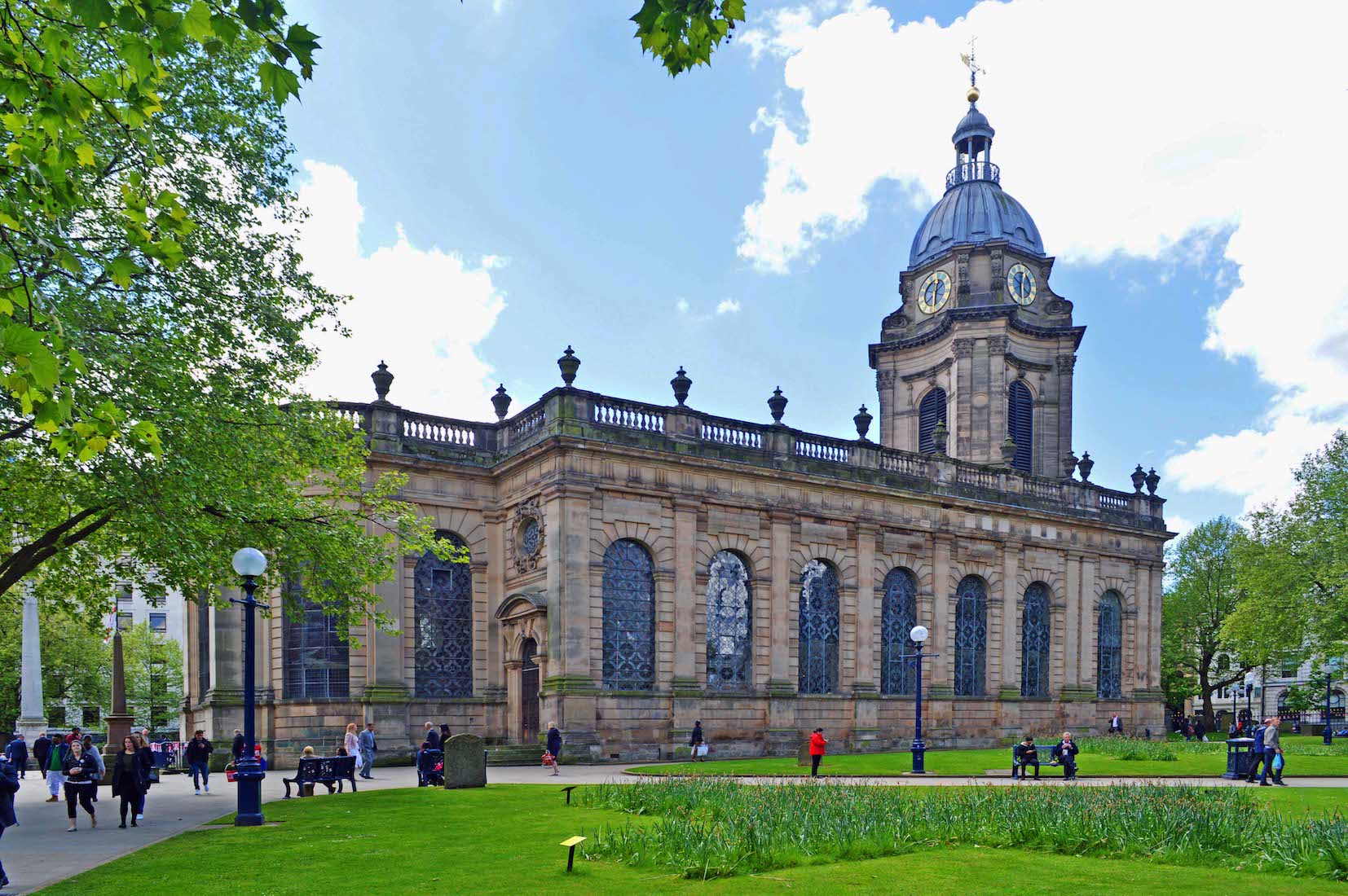
The building was consecrated as the parish church of St Philip’s in 1715. It is a rare and very fine example of English baroque architecture. It was designed by Thomas Archer, a Warwickshire man who had held an important position at the court of Queen Anne. Archer was inspired by the wonderful, elegant buildings he had seen on a Grand Tour of Europe. PLAN
2. SOUTHWEST VIEW
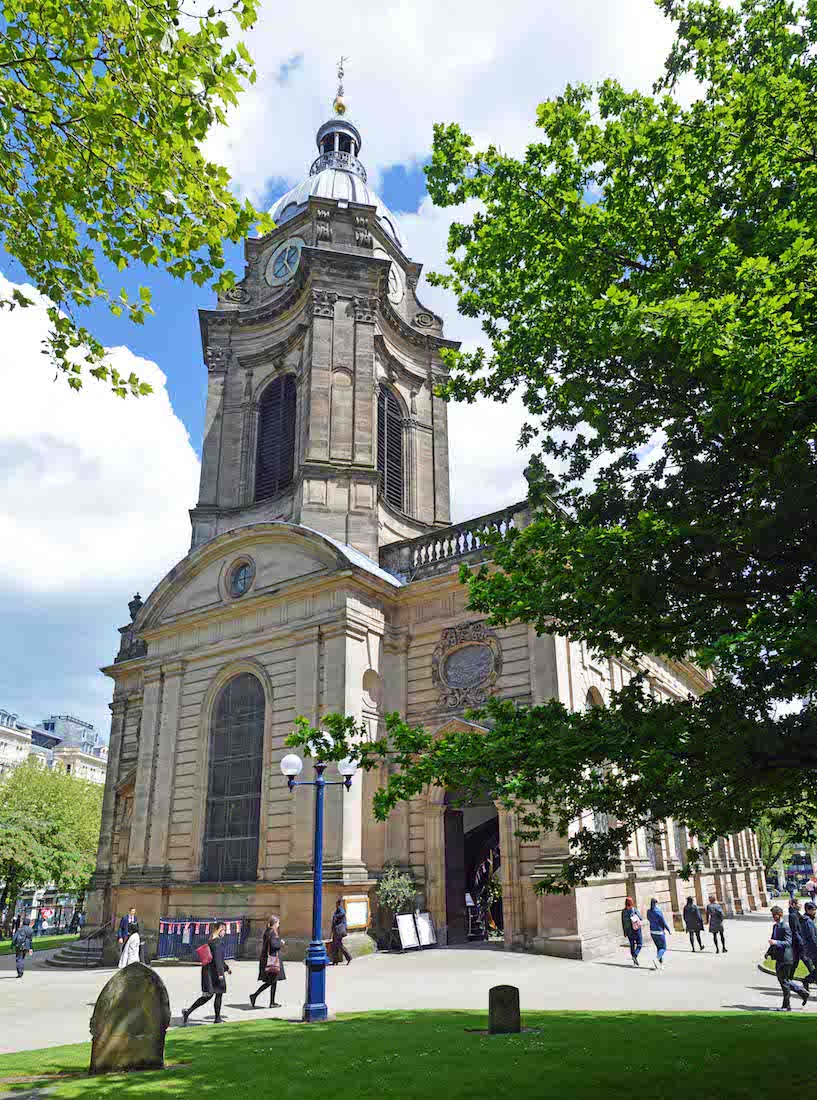
Starting near the entrance we walk around the Cathedral in a clockwise direction.
3. TOWER AND BISHOP GORE
In 1889 Birmingham was granted city status by Queen Victoria. This was followed in 1905, by the creation of the new Birmingham diocese, led by the great theologian and Christian Socialist, Bishop Charles Gore. It was Gore who decided to elevate St Philip’s Church to cathedral status, rather than build an expensive new cathedral.
4. WEST WALL
St Philip’s was a remarkably sophisticated building for its time, expecially for what was then a provincial market town. Key baroque details include the dome, the scrolls, the giant rectangular columns, the door surrounds with oval bulls-eye windows above, and the Western balustrade with decorative urns. The Cathedral is the third smallest in the UK.
5. THROUGH THE TREES
The Cathedral has a delightful park setting which is obviously loved and enjoyed by Birmingham residents. It contains various memorials and items of interest. The original St Philip’s Church had a very shallow apse at the Eastern end. in 1884 the Church was enlarged and the apse replaced by a much bigger chancel with Corinthian columns and stalls for the choir.
6. AROUND TO THE SOUTH SIDE
Significant damage to the Cathedral was caused during the Second World War. In 1940, German bombing raids destroyed the Cathedral’s roof and many of its windows. The bomb damage was repaired in 1947–8. The precious stained glass windows which we shall discover later were kept safe during the War hostilities.
7. MEMORIAL AND EAST WALL DETAIL
Just south of the Cathedral is a memorial to another bombing – the Birmingham Pub Bombings, which commemorates the 21 victims of the events of 1974. This memorial was unveiled in 1995. The view at right shows the East wall to the south of the apse.
8. SOUTH WALL
The original stone for the Cathedral came from the Archer family quarries in Warwickshire. However, this proved to be far too soft, and the nave was resurfaced in the more robust Staffordshire Hollington stone between 1859 and 1871. The tower was resurfaced in this same stone in 1958-9.
9. TOWER VIEW
The weather vane on the top of the tower features the Boar’s Head crest of the Gough family. This is a tribute to Sir Richard Gough who took action to fund the completion of the tower in 1725. The tower contains a ring of twelve bells, and the Cathedral has a strong bell ringing tradition.
10. ENTRY AND FOUNDATION STONE
Having completed our circuit of the Cathedral, it is now time to go inside! The entry is on the North side of the West wall. Just to the right of the doorway is a memorial stone – a foundation stone? Unfortunately it is made of speckled marble, making the writing quite illegible! I did decipher the name of architect William Hollins ... . PLAN
11. ENTRY FOYER
The spacious foyer contains a large memorial to David Owen, Birmingham gentleman and benefactor. I have chosen not to record details of many of the Cathedral plaques as they are mostly of no interest to online viewers. The foyer also contains an interesting light fitting, and a poster recording some of the history of the cathedral. There is a plaque above the inner door acknowledging a gift of £600 from King George in 1725 towards the completion of the tower.
12. NAVE
From the tower room at the very West of the central nave aisle we look over the font to the wonderful ‘Ascension’ window. The chancel and sanctuary are flanked by Corinthian columns, and we also notice some fine gilded decoration delineating the roof.
13. WEST NAVE
We move to the chancel and look backwards to a much wider view of the West nave. We note that the back wall is covered with various memorial tablets, and we get more detail of the ornamental gilding. Directly ahead, beyond the font, the aisle leads through the enclosed tower room to the fine ‘Last Judgement’ window. There is a set of standing figures below the window.
14. FRIEZE AND CAPITALS
This view shows some of the baroque features of this Cathedral: the elaborate scroll at the top of the arch, along with the gold capitals on the columns, and the decorative gold frieze delineating the ceiling.
15. MODEL CATHEDRAL, FONT
The simple baptismal font (right) standing in the nave aisle was designed by John Poole in 1982. Baptism is regarded as the rite of initiation into the Church. Behind the font and on the left is a wooden model of the Cathedral. Many cathedrals have such a model. After seeing this model, I had to recheck the multitude of urns decorating the outer walls!
16. LAST JUDGEMENT WINDOW
This Cathedral features four spectacular stained glass windows designed by the great Birmingham artist Sir Edward Burne-Jones. This window depicts the Last Judgement. It is in memory of Bishop Bowlby, and was created in 1897, a decade after the other three windows.
17. NATIVITY FIGURES
Just below the ‘Last Judgement’ windows stands a set of Cathedral Nativity figures. From the left we have two shepherds, three wise men, and Joseph and Mary. Above the figures is the dedication for the West window.
18. WEST NAVE, NORTH WALL
From this angle we can get some idea of the North wall of the tower room. A bell hangs near the far corner, there appear to be some lists on the wall above, and below, a cupboard containing holy oils.
19. BELL AND OILS
The bell is engraved: H.M.S. Birmingham, 1976. The plaque above reads: To commemorate the Ships Companies of H.M.S. Birmingham 1913 – 1931, 1936 – 1960, 1976 – 1999. There were three ships of this name: two light cruisers, and a destroyer. The cupboard contains holy oils: Oil of Catechumens, the Oil of the Infirm, and Holy Chrism. Below is a wooden cross made from pieces of a boat that was wrecked off the coast of Lampedusa, Italy on 11 October, 2013.
20. LISTS
On the wall above are two lists and a statement about the Cathedral bells. At left are listed the bishops of Lichfield, Birmingham, and Worcester which is interesting for what it says about the dioceses through the years. Next are listed the rectors, provosts and deans of the cathedrals. The panel at right celebrates the ringing of a peal of 5040 changes.


